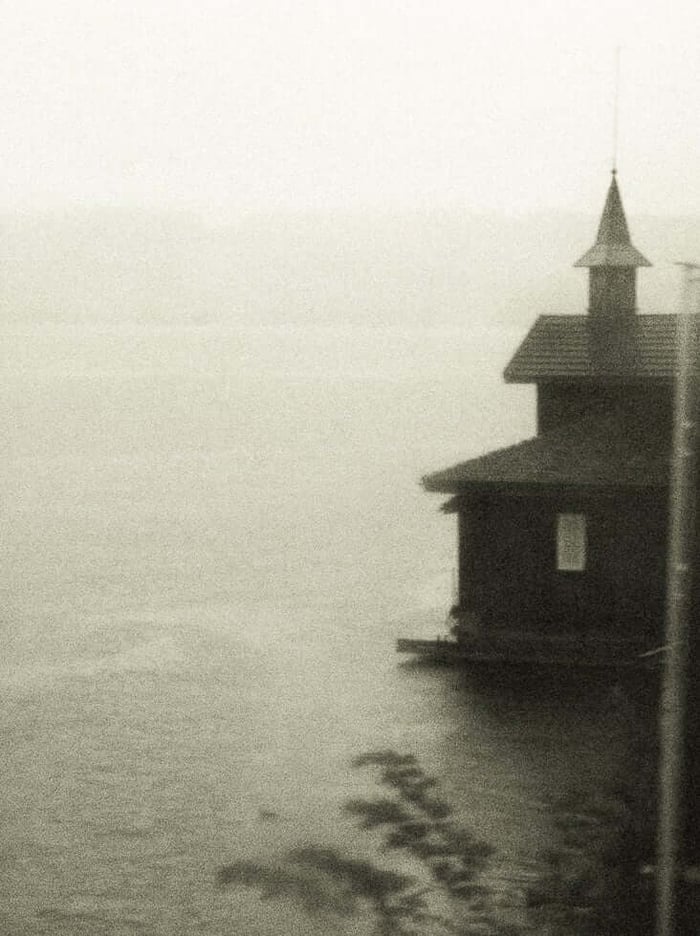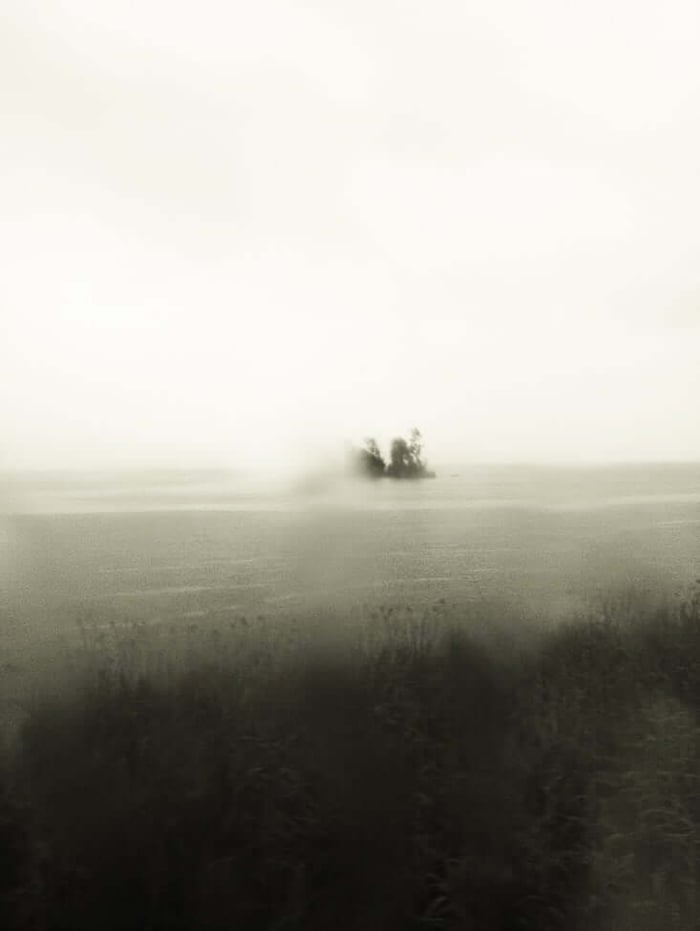Table of Contents
Patrick Lambertz - New Series Seestücke
Patrick Lambertz (b. 1972) is a Swiss photographer recognised for his ability to move with rare precision between documentary clarity and painterly atmosphere. Having grown up in Zurich before pursuing studies in both film and visual communication, Lambertz has long been fascinated by how images construct not only memory but also cultural identity. His background in cinematography informs his talent for framing landscapes with cinematic depth and nuance. At the same time, his interest in literature and philosophy adds an intellectual layer to the apparent simplicity of his subjects.
At the centre of Patrick Lambertz’s photography is an exploration of how familiar motifs—mountain chalets, blurred horizons, or vast bodies of water—can be transformed into meditations on belonging and perception. Rather than presenting landscapes as static backdrops, he positions them as mirrors of human experience. A fog-covered lake or a snow-laden chalet becomes not merely a geographical detail but a surface upon which memory, nostalgia, and collective imagination are projected.
Lambertz’s works often shift between documentary photography and acceptable art abstraction. This duality reflects his conviction that photography is never purely about recording reality; it also serves as a medium of transformation. The photographer’s task, in his view, is not only to observe but also to invite reflection. In this sense, Lambertz can be understood as part of a tradition of Swiss photographers who balance precise observation with emotional resonance, echoing historical figures such as Werner Bischof while also extending the dialogue into contemporary aesthetics.
His series frequently takes the form of thematic investigations in which a subject is examined across multiple works until its deeper meanings unfold. In Chalets, for instance, Lambertz turned his attention to the wooden mountain homes scattered across the Swiss Alps, documenting them as both architectural landmarks and cultural symbols. These structures, often weather-beaten and standing in isolation, reveal something about resilience and transience in equal measure. In Seestücke, by contrast, Lambertz moves from the solidity of architecture to the fluidity of water, using the blurred horizons of Lake Zurich and other bodies of water to explore boundaries, transitions, and the impossibility of fixing perception.
Underlying all of Patrick Lambertz’s work is a sensitivity to temporality. The slow erosion of wood, the shifting mist over a lake, or the faint line where water meets sky—all hint at the fragility of permanence. Viewers are invited to pause and consider how landscapes that appear eternal are, in fact, changing moment by moment, just as human memory transforms over time.
Lambertz’s visual language is restrained, almost minimalist, but never cold. His colours are often muted, his compositions stripped to essentials, creating an aesthetic that invites stillness. Yet within this restraint lies depth: a chalet becomes a metaphor for cultural continuity; a horizon dissolving into water becomes a metaphor for uncertainty and transition. His photographs ask us to recognise how much of what we see in a landscape comes not from the land itself but from what we bring to it—our emotions, our histories, our stories.
As a Swiss artist working internationally, Lambertz bridges local rootedness with global resonance. The Alps, lakes, and chalets that populate his photographs are unmistakably Swiss, yet the questions they raise—about belonging, memory, and the passage of time—speak universally. His works have been exhibited widely and collected in Switzerland and abroad, establishing him as a significant voice in contemporary European fine art photography.
Lambertz himself describes photography as an act of listening as much as seeing: an openness to what a place whispers rather than shouts. It is this quality—patient, reflective, attentive to nuance—that defines his work. In an age where images are often consumed instantly, Lambertz’s photographs insist on slowness. They reward those who linger, who allow silence to unfold into meaning.
Seascapes | Seestücke
As a quiet counterpoint to the heroic tradition of marine painting, Patrick Lambertz’s Seestücke series opens a space of vague transitions: monochrome views of Lake Zurich in dense rain—grainy, milky, smudged to the edge of visibility. Instead of dramatic storms or naval battles, the classic subjects of seascapes, we encounter a fragile topography of the indeterminate. A pictorial cosmos that can be grasped for a moment only to elude us the next.
 Patrick Lambertz, Seestück #24, Lake of Zurich, 2024 Limited Edition
Patrick Lambertz, Seestück #24, Lake of Zurich, 2024 Limited EditionOne of Lambertz’s starting points was an unsettling question: why did the public debate on gender identity erupt so forcefully in 2019? His inquiry led him to the simultaneous breakthroughs in quantum computing. There, alongside 0 and 1, a third, indeterminate state suddenly appears; transposed onto society, it undermines centuries-old binary worldviews and opens a zone in which “neither–nor” and “ both-and” coexist. The fact that gender is now discussed as a spectrum is, for the artist, a cultural resonance of this technological paradigm shift. DISCOVER SEESTUECKE ONLINE
Lambertz renders that conceptual shift tangible by breaking radically with his former visual language. Where his earlier works were defined by analytical sharpness and clarity, Seestücke is ruled by Blur, grain, and hovering ambiguity. During hours-long train rides along the lakeshore, he photographed through rain-soaked windows; the glass surface and the train’s motion dissolve the water, sky, and shoreline into a shimmering blur. Droplets on the pane act as natural diffraction grids; the grain stands for quantum fluctuations; the mist, for the cloud of possibility in which all realities “collapse” only in the instant of observation.
Each exposure—Heisenberg in mind—is a measurement: an attempt to fix a state while knowing the act of measuring changes what is observed. Step close and water, sky, and land disintegrate into amorphous particles; step back and the noise condenses into a poetic horizon. Perception becomes performative.
This is where the series’ programmatic core unfolds. Openness to Blur means acknowledging that old recipes no longer suffice. In an era of global upheaval, familiar yes/no categories falter; right and wrong become ever harder to distinguish. Seestücke by Patrick Lambertz argues for embracing this transitional zone not as a threat but as a productive pause. A moment of reflection that outshines snap judgment. Those who accept uncertainty can think more complexly, act more openly, and feel more acutely.
Thus, Seestücke translates the present erosion of clear dualisms into aesthetic form: grey as the colour of transition, grain as the texture of possibility, the lake as a mirror of a world now recalibrating itself. The series refuses quick answers and instead offers a resonance chamber in which the boundaries between image, viewer, and meaning are continually renegotiated. An invitation to regard the visible and invisible alike with “new eyes,” echoing Marcel Proust’s dictum that true discovery requires not new landscapes but new perspectives.



